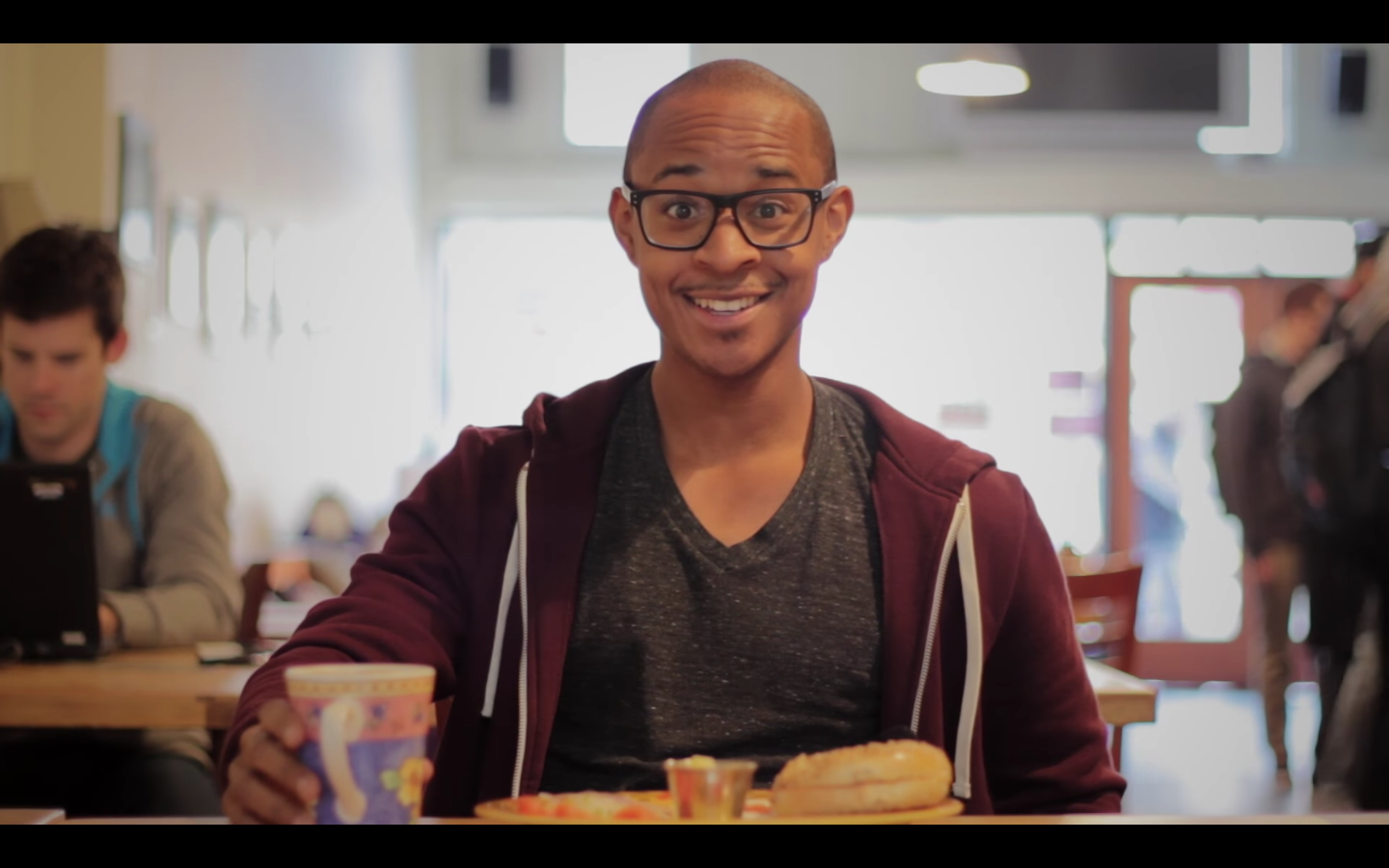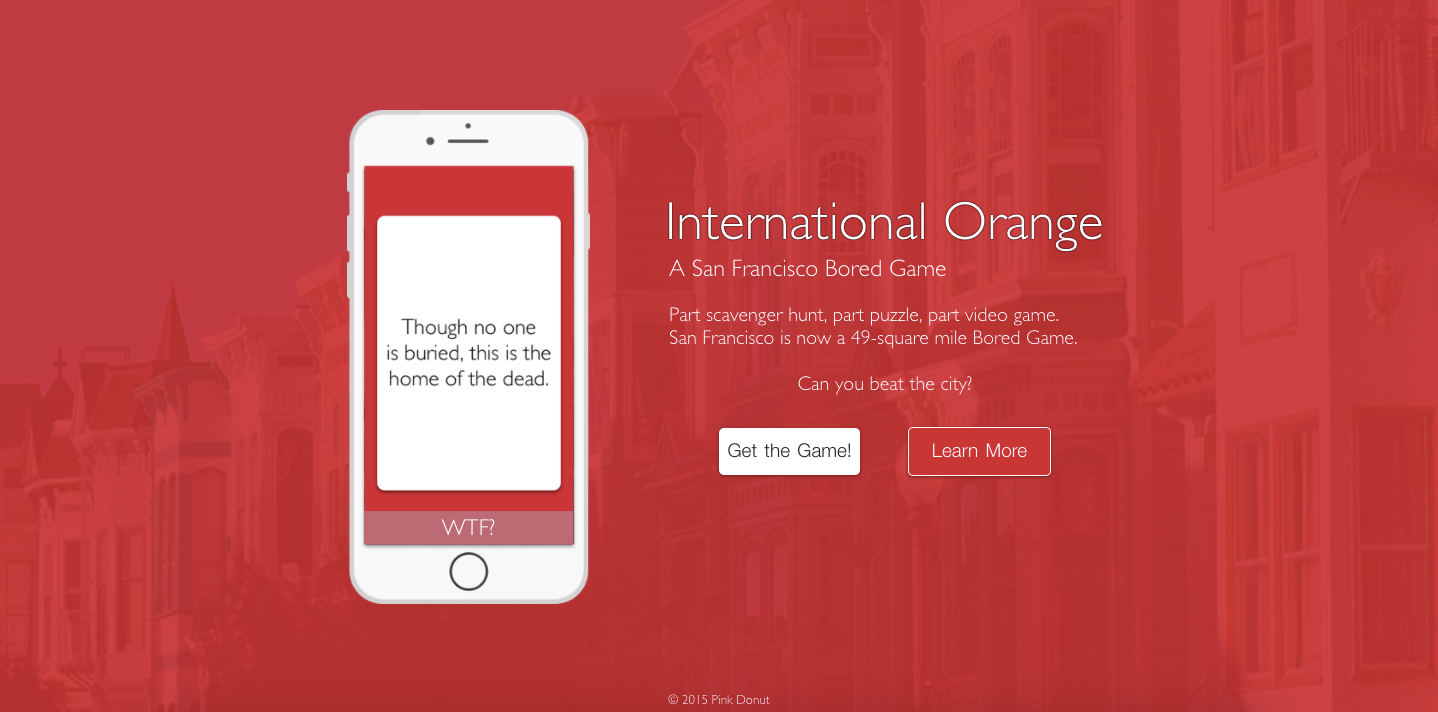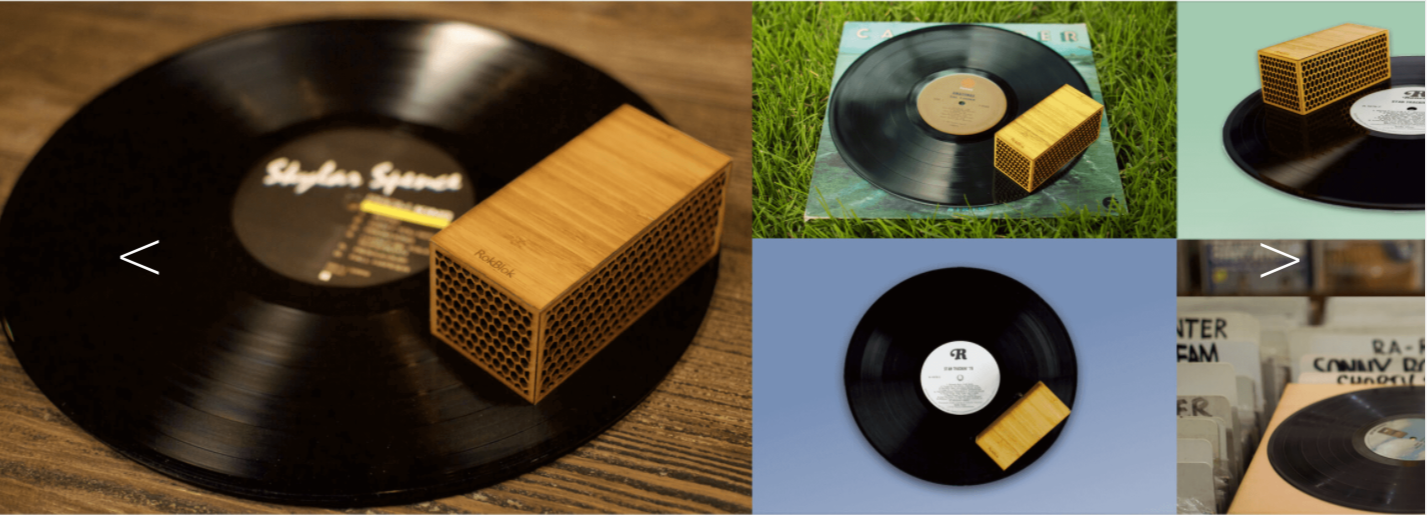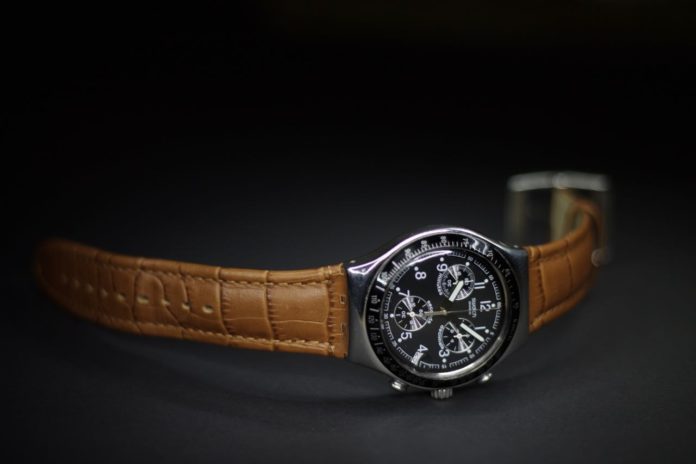Author: Dave Schools
In a moment of surprise, Robert Herjavec presented Riley with a stunning offer:
“Here’s my offer and it’s a little bit different,” says Herjavec. “Sell it to me. I’ll pay you $500,000 for 100% of RokBlok.”
But that’s not all. His offer also included a six-figure salary for Riley to stay on board for two years, and an additional royalty per unit paid to the founder going forward.
Everyone watched and hung on Riley’s next words. In his head he was probably thinking how he first wrote the idea down in a notebook in June 2016. Eighteen months later, he now has the opportunity to sell it for half a million dollars.
“I’m going to say yes to that right now,” replies Logan Riley, flashing a smile.
I had a chance to talk with Logan Riley twice, once before and once after his Shark Tank experience.
His story is inspiring and insightful to anyone who wants to create something that people love and grow it into a product that sells for big money.
Below, you’ll learn about how to come up with a great product idea, how to bring it to life, how to pitch it, and how to know when to put it to bed.
Ready? Let’s drive.
If you couldn’t tell from the video, Logan Riley is a magnetic 29-year-old communicator who grew up in Las Vegas and lives in San Francisco.

He worked at Apple as a Creative Education Lead for five years. “At Apple, you focus on that one thing you do,” he said. His one thing was teaching people how to use the products the company makes.
At his next three employers, Fuze, Pandora, and LearnUp, he did more of the same: team building and product training.
After his last employer disbanded, he grew tired of not having control.
“I noticed I owned a section but never had complete control,” he said. “I always had ideas that were X-ed by somebody five levels above me.”
So he launched his own company and decided to call it… well, something odd.
“Pink Donut is an idea company to create ideas,” said Riley. “I throw ideas out there. If people like it, cool. If people don’t like it, whatever. RokBlok was one of those ideas.”
The founder said he wanted to name his company something ridiculous to match the zany ideas it created. “My company is a bunch of sprinkles. And sprinkles make people smile and laugh. Plus,” he adds, it’s so unusual, “you will remember it.”
Whether you remember it or not, he’s right about the fact that the sugary name matches his amusing product ideas. Check it out.
The World’s Dumbest app
One of his first ideas when he was first learning how to code with Swift (the iOS programming language) was an app called LookFor.
LookFor allowed users to find friends in dark places like festivals and movie theaters. The app turned the device’s entire screen into a brightly colored blinking light.
Pretty basic, right?
LookFor turned out to be a hit. Major tech publications wrote about it, including TechCrunch, Yahoo, and PopSugar. CNET’s headline wrote “LookFor, the ‘world’s dumbest app,’ is actually pretty smart”. It received 50–70k downloads and the Kickstarter to build the Android version was funded in a couple days.
Riley laughed thinking back on it. “It was hilarious.”
But a serious thought popped into his head. “If I can turn a blinking light into a something hundreds of thousands of people talk about, maybe I can make something bigger and better.”
After all, he did have a notebook full of other product ideas.
With Pink Donut in full swing, he started pumping out more interesting products.
How to Choose Which Idea to Focus On
Logan Riley works alone. No partners. He does everything himself. His time is extremely valuable so he’s selective about which ideas he pursues. To narrow down his choices, he weighs each idea against four criteria:
- Time — how much time will this take?
- Passion — which project am I most passionate about?
- Market — do enough people need or want this thing?
- Money — can I afford to build this? (he’s self-funded)
“I laser-focus on one at a time. Each project has a time box of five months.”
His first project was called International Orange, a 49-square mile scavenger hunt “bored game” in San Francisco.

“Pokemon Go blew me out of the water,” said Riley. In a similar fashion, “This game required users to run all around the city of San Francisco to solve physical puzzles. I originally made it as a game that ‘you won’t win’ and offered a $500 prize to the first person or team to beat the game. That claim actually ended up blowing up in my face when a husband and wife team beat my ‘impossible’ game in just two weeks.”
International Orange was met with mild success. Knowing when to pull the plug on a project can be a difficult decision, as Riley shares in the next section.
The second Pink Donut project was an audio series about the City of San Francisco. Each episode featured a different character and illuminated things that happen only in the foggy bay city.
Riley broke his lone wolf work style and partnered with a comedian to write the script. “We used a special mic to make it sound like you’re actually there, like being immersed in a coffee shop on a Tinder date. You hear the bean grinder, music, and background conversations.”
After five episodes, Riley discovered there was much more competition than he’d expected.
How to Know When to Pull the Plug on a Project
The only thing worse than a project that bombs is a project that does okay. Not good, not bad. Just okay. If it flatlines, it’s clear that you should box it up and move on. But what if it stumbles along, half-alive, with mediocre results? This decision plagues founders.
Riley said he decides to pull the plug based on two factors: his passion and the market.
Your passion
If something starts to taper out, “I try my best not to push it. I don’t try to put any more money in. I don’t want to hurt my bottom dollar. The only thing I sacrifice is my time.”
He’s saying a founder’s passion is the rare resource that fuels the startup’s early success. If your passion dissipates, it’s a sign to move on to the next thing, said Riley.
“Some of the coolest products came from people going all in.”
Knowing how much time to dedicate to the project can also be obscure. This is why Riley allots the 5-month time box at the beginning of each initiative, to set up a clear timeline to work with.
The market
The other telltale factor to knowing when to quit is the market and how well it’s received. Do enough people love it? Is there naturally generated word of mouth?
“I was super passionate about the [scavenger] game, but I don’t think I did a great job marketing it. I just let it sit.”
LookFor, International Orange, and the SF audio series all performed moderately well. But Riley decided to move on, either because he lost passion for it, or because sales in the market stopped growing fast enough.
These two factors are not always black and white. It takes self-awareness and market analysis. However, Riley said that there’s value in every project you create.
“If you have a project you’re passionate about, build it for yourself. It makes you stronger, and you learn a lot from it. So when you put it out there, at least you can say you built something you’re proud of.”
The most important lesson for creators is to finish the project and get it out there. Whether it’s a smashing success or an abysmal failure is beside the point. “As a maker you always want to see things through, even if it’s just an MVP.” The best thing you can do is get it out there and see what happens.
How RokBlok Took Kickstarter by Storm

Riley opened his notebook to the entry with an idea for a hardware project — a small bluetooth speaker that played vinyl discs. It solved the bulkiness problem with record players. Record players are tough to lug around and they take up a significant amount of space, especially for city dwellers living in tiny apartments like Riley.
He spent $2,000 to order the materials and tinkered with the first prototype until it spun smoothly and sang clearly.
With a working cube, he launched a campaign to raise funding using the popular product crowdfunding site Kickstarter, a platform to which the serial creator was no stranger.
One of Logan Riley’s secrets to success is his ability to hack Kickstarter. He knows all the tricks in the book.
First, if you’ve ever seen any of his product videos, you’ll notice how his tech training background at Apple and Pandora shines through. His videos are simple, sharp, and catchy. He wears a persistent smile and over-annunciates his words. And there’s always a self-aware joke at the end to remind viewers that this is all just for fun and fluffernutters.
Second, he strategically presents the product in the video to protect it from being copied. “I’m terrified of the Fidget Cube situation,” said Riley. He’s referring to the story of how Chinese manufacturers ran off with the designs and beat the original creator to market. “It happens all the time to creative Kickstarter projects.”
To protect his design, he never exposed the bottom of the device in his videos or pictures. “That’s where the magic happens,” he said. “I let people see the product before they buy it but then let them discover how it works when it’s actually purchased and in their hands.”
In China, a place where Riley is spending more and more of his time, he sources only pieces of the product design to a factory and then brings the parts to an assembly house that has a signed non-compete, non-disclose agreement. This is similar to how Apple works with Foxconn, the world’s largest contract electronics manufacturer. Let the manufacturer see a piece of the product, but never the whole thing.
Hoping to raise $50,000, Riley launched the Kickstarter campaign for RokBlok on December 5th, 2016.
In merely three days, the funding amount rocketed past the goal and went on to raise 700% more than Riley anticipated: a whopping $350,000.
How did he do it?
If the budget’s there, some creators will simply pay to garner massive exposure for their product. But not Riley.
“To be honest, I was against all forms of paid advertising,” he wrote in a Reddit ‘Ask-Me-Anything’ session. “I focused most of my campaign on getting write ups from great publications. I personally reached out to about 300 journalists to tell them about RokBlok.”
TechCrunch, Business Insider, The Verge, Mashable, and other pubs covered RokBlok. “It’s cute as a button, clever as hell and utterly absurd,” wrote TechCrunch.
Unlike the positive hazy burst that press tends to bring, Riley found a more targeted submarine tactic for getting Kickstarter backers.
“In the last 14 days of the campaign when a friend of mine contacted me and told me Jellop could bring in more backers in the final stretch, I finally relented.”
Jellop is a small team of crowdfunding experts who created an advertising software that powered some of the most successful Kickstarters in the world like Pebble and Peak Design.
“Jellop definitely delivered,” he reported. “Of the $350,000 raised on Kickstarter, Jellop was responsible for about $107,000 in 14 days alone.”
As the numbers ticked up, the founder thought about how this was the first time he was doing a hardware project. “I have one RokBlok. Now I have to build thousands. Yay! But oh shoot! This isn’t software! This is entirely new.”
“It scared the hell out of me.”
Logan Riley worked 17 hour days to ship the first batch of 6,000 units to Kickstarter backers and pre-sale customers in time for the holidays.
Plunging into the Shark Tank
In December 2017, Riley stood before the Sharks and did what he does best: teach people how a product works. But this time it was different. He wasn’t doing it for anyone else. He was doing it for himself, and with his own product.
RokBlok dazzled the Sharks. But what caught the eye of Kevin O’Leary a.k.a. Mr. Wonderful even more was its creator. “Am I investing in you as an inventor and everything you invent? Or is this just for RokBlok?”
“This would be just for RokBlok,” responded Riley.
“Whoa, hold on there bubba-looey,” chided O’Leary. “Why would I do that?”
Riley explained that this was an investment in RokBlok but could lead to other investment opportunities in his future ideas. But the debonair anchor investor sat back in his chair brooding.
“I think you’ll get bored if it doesn’t sell right off the bat and go on to your next thing,” said billionaire Mark Cuban.
“I hate working with perpetual inventors. Hate it. Every one [of your inventions] is your baby until the next one is born. Drives me crazy.” — Mark Cuban
Mr. Wonderful proposed an offer of $300,000 for 50% of RokBlok, but a delighted Robert Herjavec swooped in saying he agreed with Cuban and presented his legendary offer for an outright purchase of RokBlok for $500,000. The rest is history (and locked up under a thick NDA).
I caught up with Logan Riley after the show. He said the experience was “exciting and terrifying”, as if he was dreaming outside of his own body and watching the show at home on the couch waiting for someone to wake him up. He sold out of inventory in four hours after the episode aired.
The Road Ahead
Riley has his hands full with customer service and manufacturing the next batch of 5,000 units by March. His highest priority is sorting out the kinks with the 5% of customers who received a defective RokBlok.
“I reached out to everyone who got a bad unit. It shouldn’t have happened,” he said. “I’m not going to leave you with a product that’s not working right.”
He has since hired a third-party QA firm to check every unit before it gets shipped.
Going forward, he’s on the hook full-time for two years working with Herjavec and RokBlok. But Pink Donut lives on. Riley’s already flipping through his old notebook of ideas.
“I have a few hundred more ideas,” his face animated into a smile. “But in 2018 I’ll be working on a home furniture product, a music related app and (hopefully) an augmented reality app.”
It amazed me that Riley does all of this by himself. I asked him what his first hire will be. “A lawyer,” he replied.
“Crafting and drafting and litigating intellectual property,” he said. “The ideas are what matter. That’s more important than the product itself: turning ideas into patents. I want to hire someone so I can feel protected.”
I’ve never heard of a lawyer being the first hire, but then again, I’ve never met an inventor like Logan Riley either.
Takeaways
- Choose a winning idea to work on based on four factors: how much of your time will it take, how passionate are you about it, is the market big enough, and how much money it will take to build it.
- Work on an idea to the finish line, but know when to quit. Riley time-boxes his projects to five months. Don’t feel bad about failure. Failure is the best teacher for entrepreneurs.
- Make the product helpful, make the marketing clever, and don’t get it backwards. All of Riley’s products solve a “dumb” or “simple” problem. But how he markets them is playful and fun. His videos are a masterclass on how to present a product.
- To be successful on Kickstarter, it takes a lot of background hustle and connections. Riley emailed 300 press contacts and recruited specialists at Jellop for the final push on Kickstarter.
- His best advice for crafting a pitch for investors is to keep it short, keep it “colorful”, and know your numbers. “It’s been my experience that if you can get an investor to smile, or laugh or even say ‘WTF?’ you have a better chance that they will WANT to listen to you….and potentially give you money 🙂 The ‘WTF moment’ that I practiced about 500 times was pulling the RokBlok out of my pocket (Definitely stolen from Steve Job’s iPod presentation).”
Author’s Note:
The entire time that I worked on this article I was on this absurd Whole30 diet and wasn’t allowed to eat any gluten or grains. It was torture. The first thing I’m going to eat when I’m off the diet is a pink donut.
Source: medium.com













